4. They might enjoy making their own guesses as to what then next two symmetrical cards are, placing them face-down in their symmetrical places.
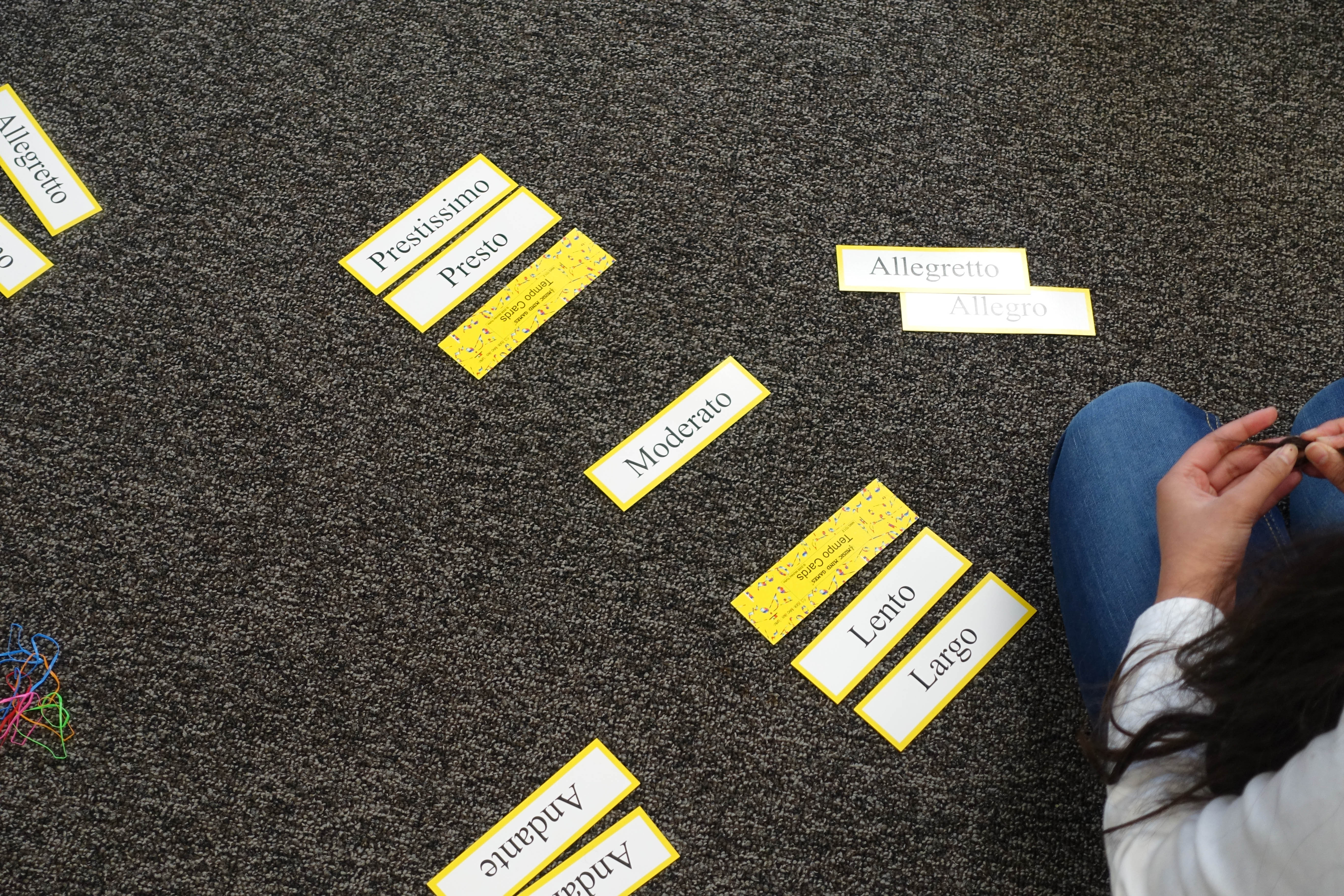
Everyone turn over cards and see what everyone has.
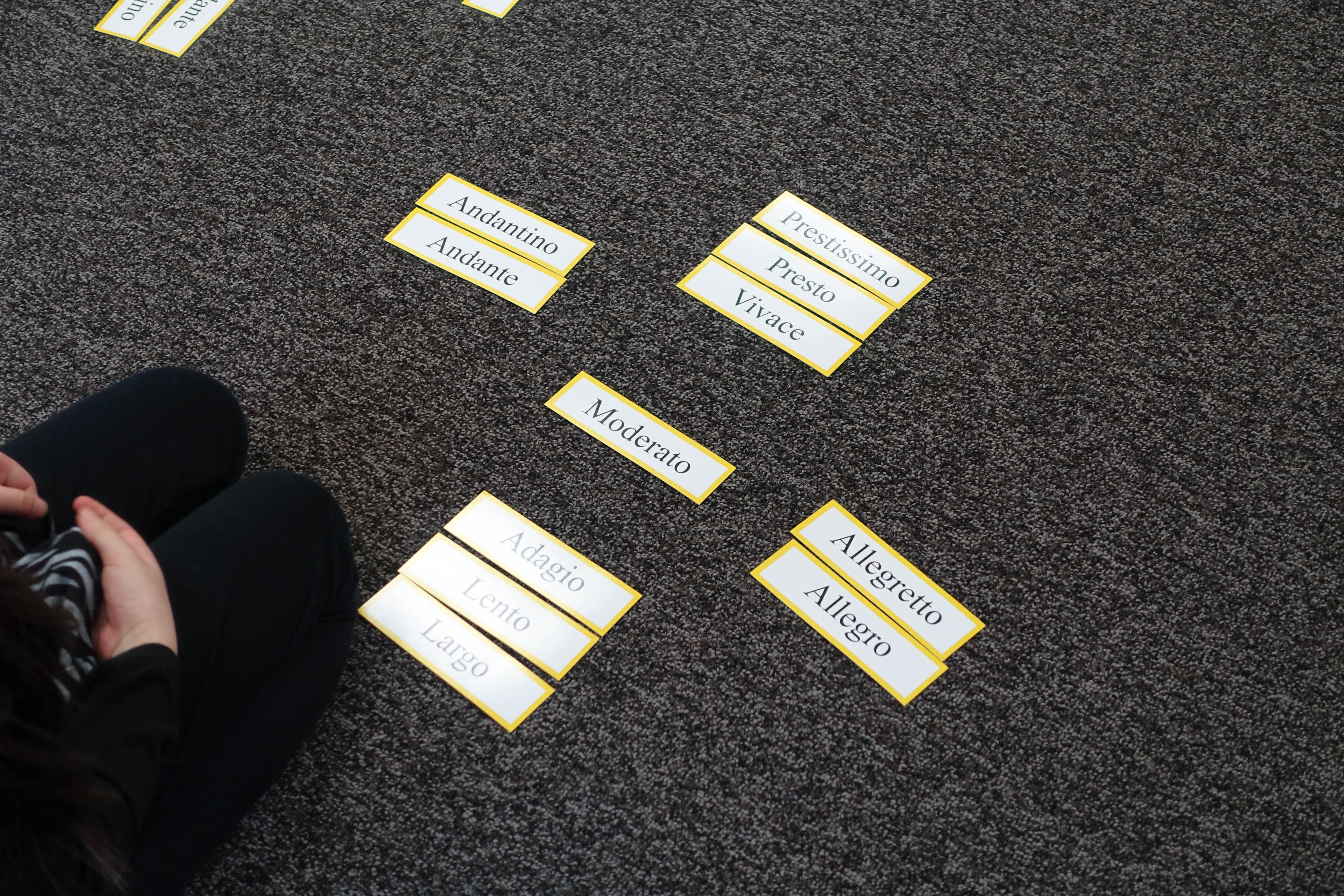
(Play Fine)
5. The last four tempos all begin with the letter “A” and pair up nicely. Move them off to the side, asking students for their opinions as you move the cards in all the possible combinations. Lots of guesses are good!
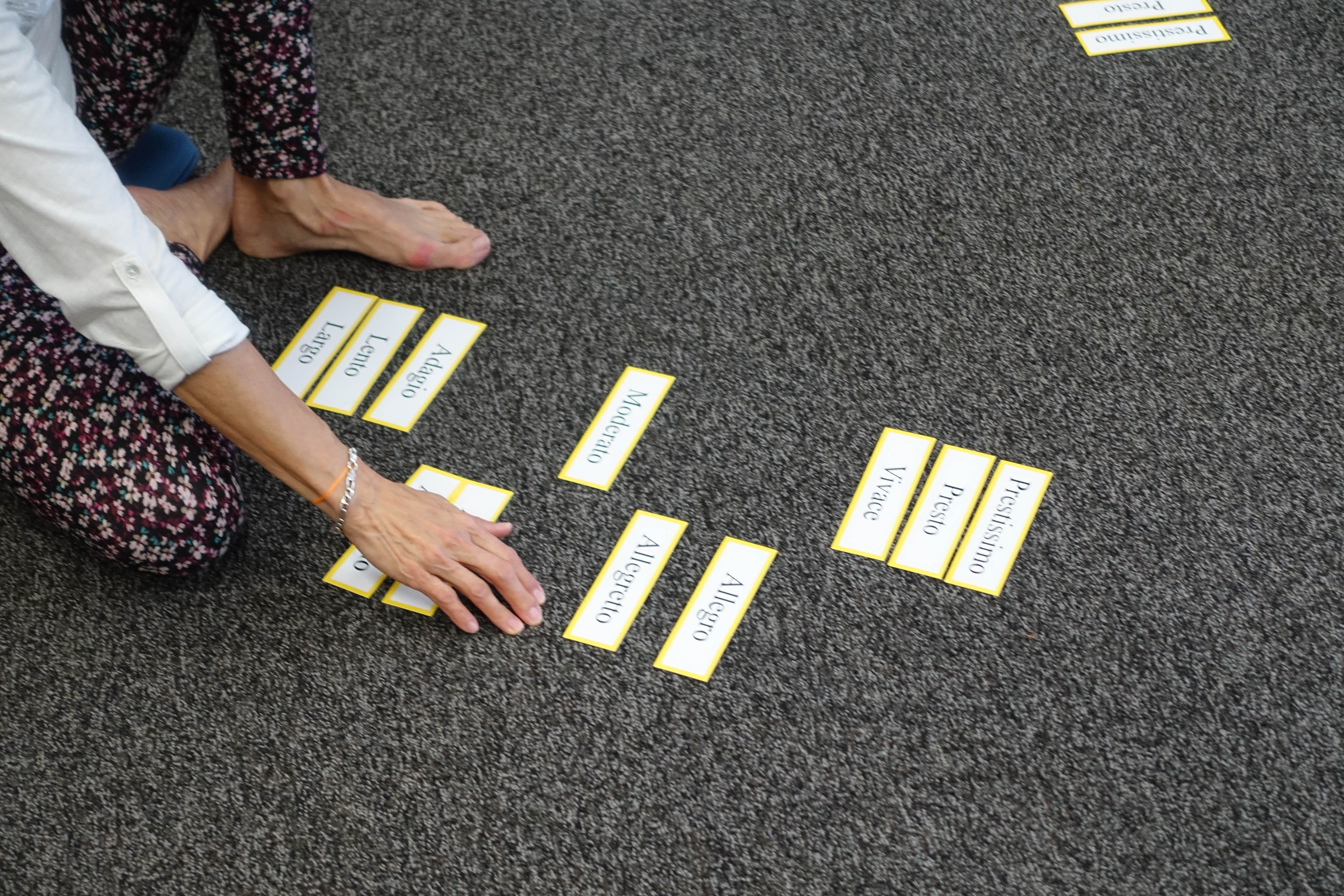
Students will start to arrange their own cards as they try out different combinations.
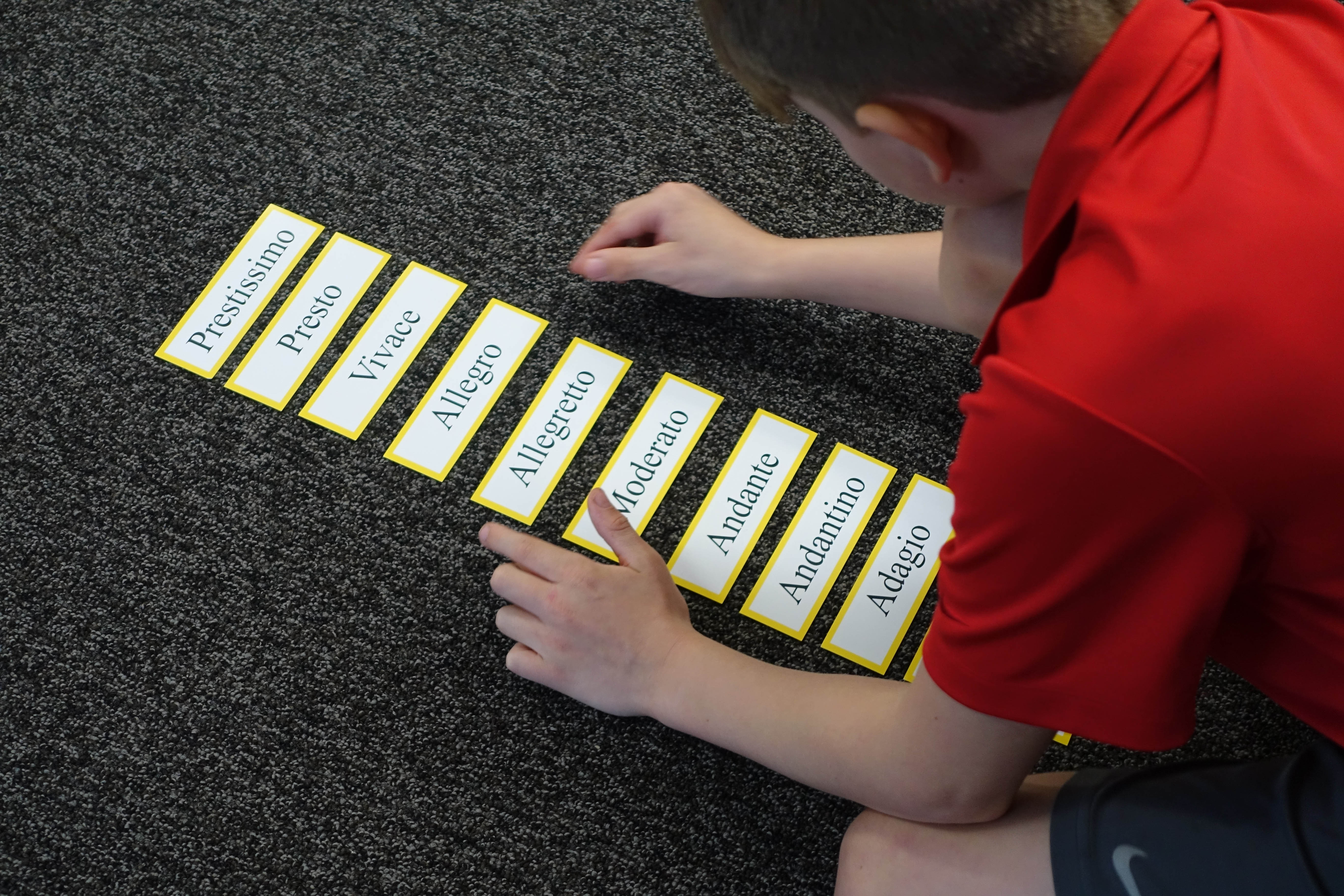
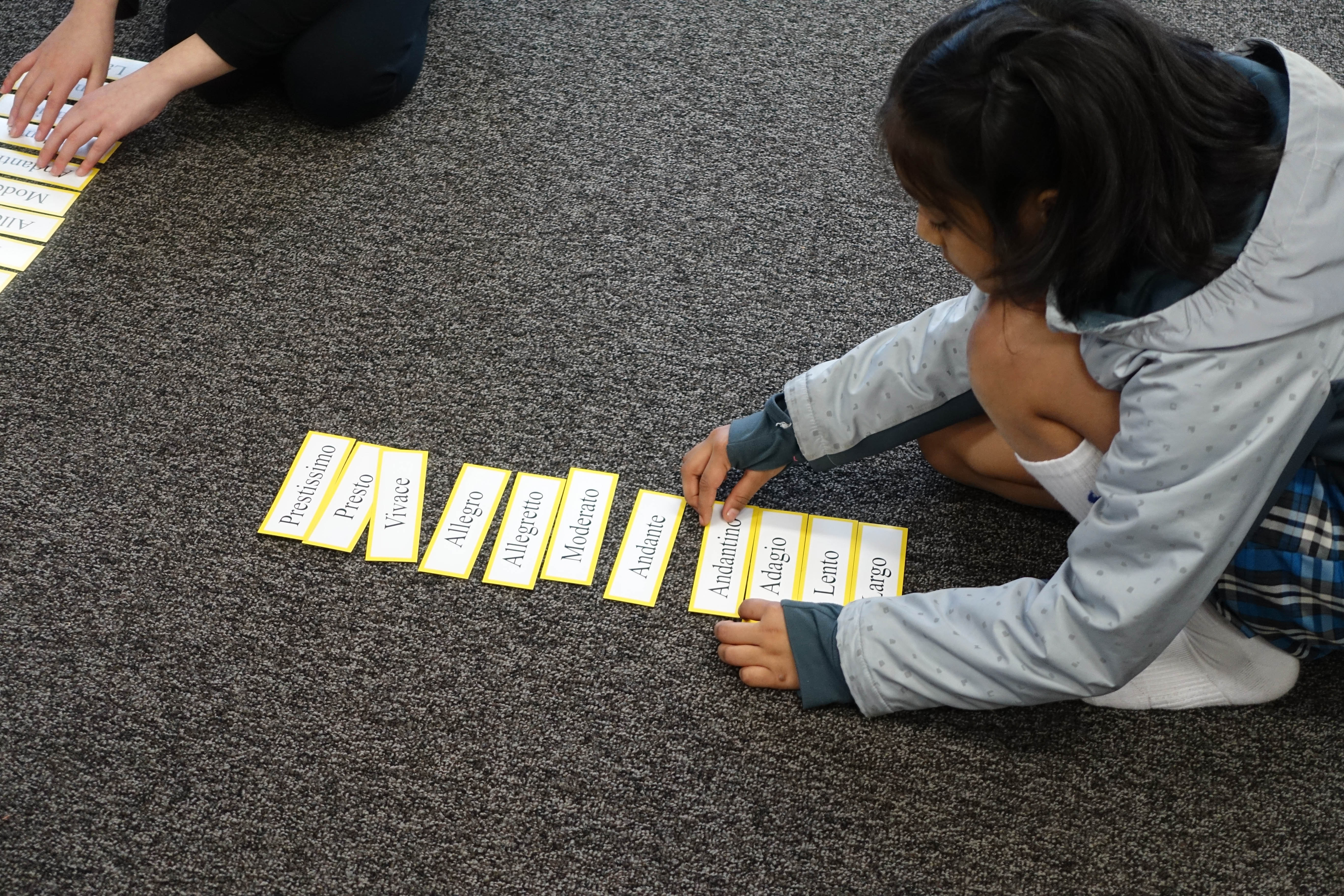
To help them figure out the answers, explain that “etto” and “ino” are endearments in Italian and mean smaller or less. “So, Allegretto is less Allegro and Andantino is less Andante.”
This may help them understand that Allegretto is slower, or less fast than Allegro. Andante and Andantino may have them scratching their heads until you say, "Etto means less than. So Andantino mean less than Andante. If Andante means slowly . . . then Andantino is . . . less slow making it . . . faster than Andante." Lightbulb moment!
Isn’t it neat? This is why we learn them symmetrically.
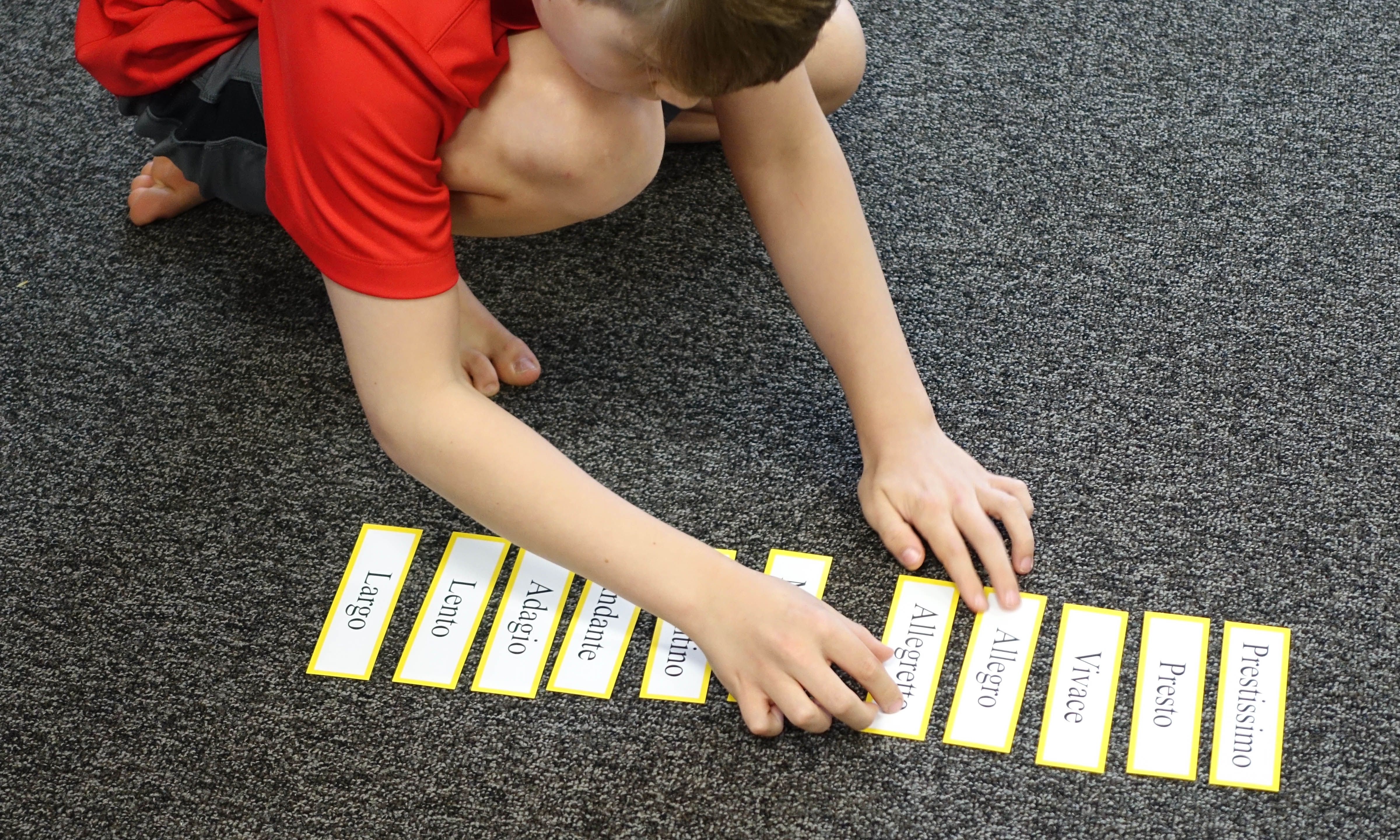
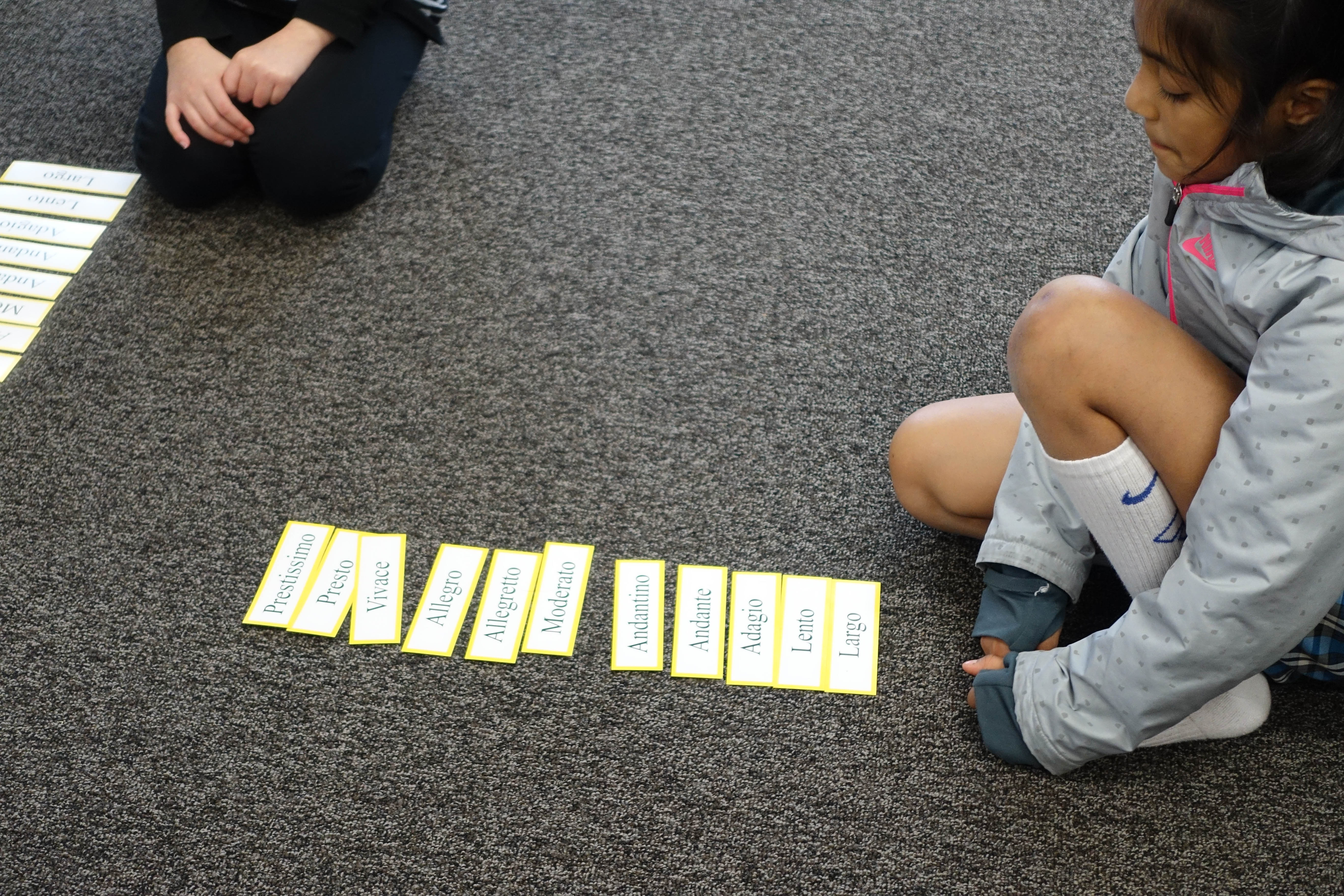
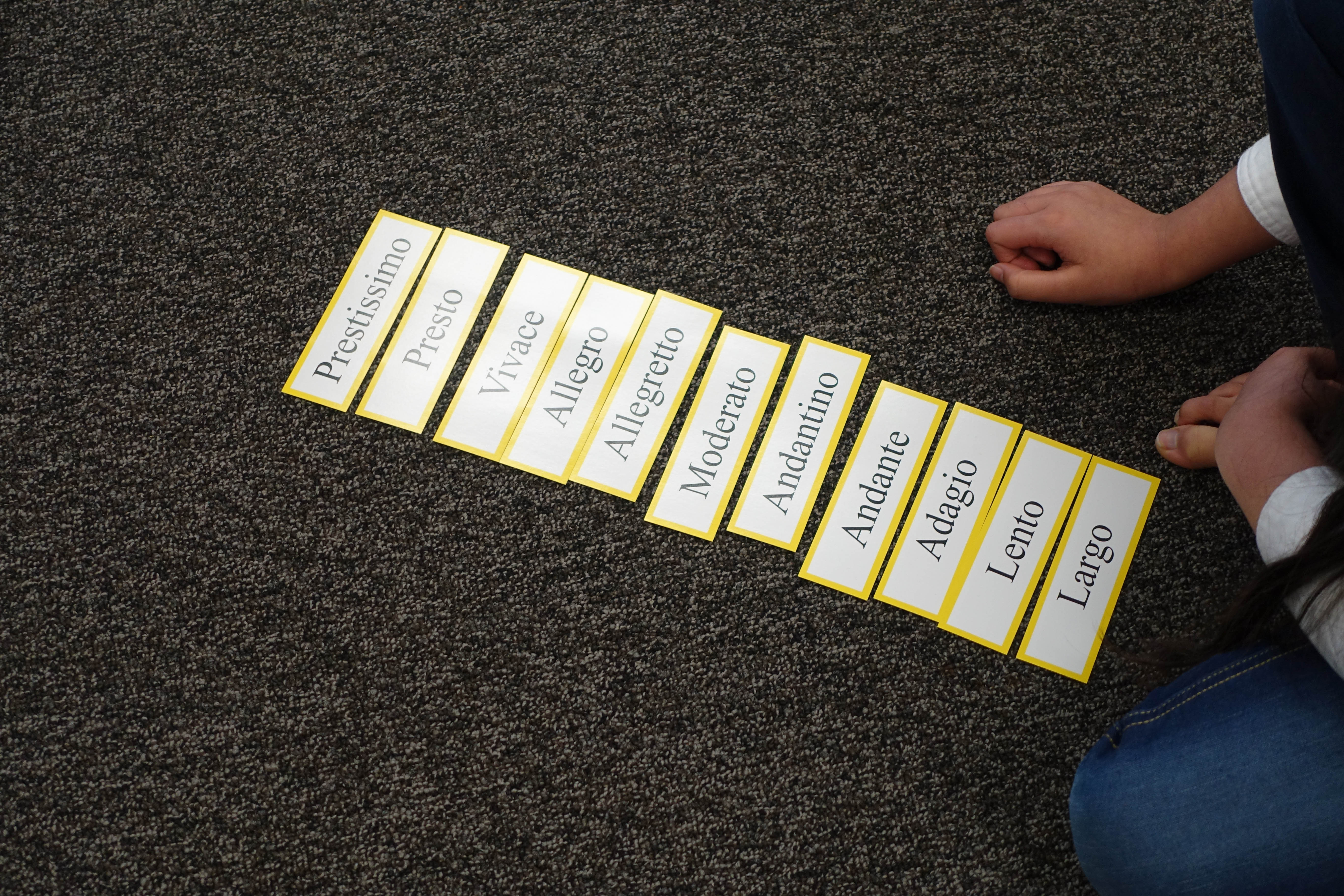
(Play Fine) with the three middle cards:
Andantino, Moderato and Allegretto
(Play Fine) with the five middle cards:
Andante, Andantino, Moderato, Allegretto and Allegro
Note: It will be too much to play Fine with all eleven cards. There are four intermediate games first.
